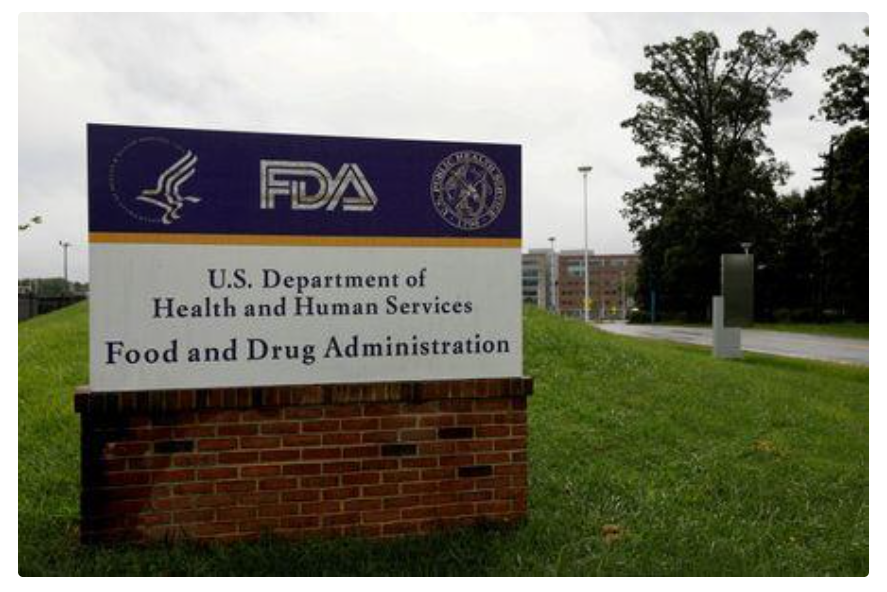
In April 2025, the U.S. Food and Drug Administration (FDA) unexpectedly suspended its long‑standing proficiency testing program for Grade “A” fluid milk and related dairy products after an internal email revealed that the Moffett Center Proficiency Testing Laboratory could no longer support testing activities due to severe workforce reductions. This action—a direct consequence of the Trump administration’s push to cut 20,000 positions across the Department of Health and Human Services (HHS) and propose a $40 billion funding reduction for the FDA—has halted not only dairy testing but also emerging programs for avian influenza and Cyclospora detection in other foods. Industry stakeholders and public‑health advocates warn that without regular “round‑robin” comparisons against FDA benchmarks, state and private labs risk inconsistent results, potentially undermining accreditation standards and consumer confidence. Meanwhile, the FDA is exploring alternative arrangements for the upcoming fiscal year and says routine safety testing of dairy products will continue uninterrupted.
Background on the FDA’s Milk Testing Program

Importance of Proficiency Testing
The FDA’s proficiency testing program is designed to ensure that state and commercial laboratories can accurately and consistently detect contaminants and pathogens in dairy products by comparing their results against FDA benchmarks. The program, administered by the Moffett Center Proficiency Testing Laboratory in Davis, California, covers Grade “A” fluid milk and various finished products, helping labs meet accreditation standards and maintain public trust.
Proficiency testing—sometimes called “interlaboratory comparison exercises”—involves distributing blinded samples to participating labs, which analyze them and report back results; discrepancies are then addressed through technical guidance and additional training. Such programs are considered a “gold standard” in analytical quality control, reducing the risk of false negatives or positives that could allow harmful bacteria or residues to slip through.
The Moffett Center Laboratory’s Role
Since its inception, the Moffett Center has operated as the hub for dairy proficiency testing, coordinating sample preparation, distribution, data analysis, and reporting. Beyond dairy, the center has supported proficiency exercises for foodborne pathogens such as Salmonella, Listeria, and Cyclospora in produce, and more recently for highly pathogenic avian influenza in food matrices.
Prior to the suspension, the center oversaw testing at roughly 50 state, USDA, FDA, and private‑sector labs nationwide, ensuring that routine and emergent testing methods conformed to the latest ISO/IEC 17025 standards for laboratory competence.
Workforce Cuts and Policy Changes
HHS Workforce Reductions
In early 2025, the Department of Health and Human Services implemented a sweeping reduction of approximately 20,000 positions across its operating divisions, including FDA, NIH, and CDC—part of President Trump’s broader Department of Government Efficiency (DOGE) initiative. This action aimed to downsize the federal workforce and realize up to $40 billion in savings by cutting discretionary budgets.
These reductions disproportionately affected laboratory and technical staff within FDA’s Food Safety and Nutrition division, where key roles such as quality assurance officers, analytical chemists, and microbiologists were either eliminated or left vacant.
Trump Administration’s Budget Proposals
The Trump administration’s FY 2026 budget proposal sought to reduce FDA’s discretionary funding by one‑third—approximately $40 billion—citing overlaps with USDA and private certification programs. Critics argued that such cuts would erode the agency’s capacity to safeguard food and drug safety, while supporters maintained that eliminating redundancy would increase efficiency.
Department of Government Efficiency (DOGE) Impact
Launched under the aegis of tech entrepreneur Elon Musk—appointed by President Trump—DOGE was charged with streamlining federal operations. DOGE’s early actions included decommissioning under‑utilized labs, consolidating procurement contracts, and trimming provisional hires. However, whistleblowers within FDA warned that DOGE’s high‑level directives lacked technical nuance, leading to abrupt program suspensions with little transition planning.
Details of the Suspension
Internal Email and Effective Date

On April 21, 2025, an internal email from FDA’s Division of Dairy Safety—addressed to “Network Laboratories”—informed participants that the proficiency testing program for Grade “A” raw milk and finished dairy products would be paused effective Monday, April 21.
The email cited that the Moffett Center Laboratory “is no longer able to provide laboratory support for proficiency testing and data analysis,” prompting the immediate halt of sample distributions and data assessments.
Scope: Grade “A” Milk and Dairy Products
Grade “A” Milk refers to fluid milk meeting the highest sanitary standards under the Pasteurized Milk Ordinance, used for direct consumption. The suspended program covered raw and pasteurized fluid milk, cream, and related finished products destined for retail sale.
Meanwhile, the FDA emphasized that the suspension did not affect routine enforcement sampling or inspections of commercial dairies, which continue under separate authority.
Halt on Bird Flu and Cyclospora Tests
In addition to dairy proficiency tests, the internal email noted that existing and in‑development Interlaboratory Comparison Exercises for detecting highly pathogenic avian influenza (HPAI) in milk, cheese, and pet food had been suspended earlier in April.
Similarly, proficiency exercises for Cyclospora detection in fresh produce—spinach and berries—were paused as part of FDA’s Food Emergency Response Network (FERN) testing program, affecting over 170 laboratories nationwide.
Implications for the Dairy Industry and Public Health
Industry Self‑Testing Measures
Most large dairy processors conduct their own internal microbiological and chemical testing—sampling incoming farm milk hourly and testing for coliforms, somatic cell counts, antibiotic residues, and pathogen indicators. This redundancy means that, in theory, commercial flows of milk remain subject to safety checks even without FDA’s proficiency exercises.
However, smaller processors and state labs often rely heavily on FDA benchmarks to validate their methods, particularly for rare contaminants or novel pathogens. Without proficiency comparisons, these labs may face accreditation challenges.
Accreditation and Consistency Risks
Accrediting bodies such as A2LA and ANAB require periodic proficiency testing reports to maintain ISO/IEC 17025 certification. Suspension of FDA‑led exercises could lead to gaps in accreditation evidence for participating labs, potentially jeopardizing their ability to operate.
Furthermore, inconsistent testing protocols across labs increase the risk of divergent results: one lab’s “within limits” may be another’s “fail,” undermining consumer confidence in milk safety.
Response from HHS and FDA
An HHS spokesperson clarified that the Moffett Center laboratory had been slated for decommissioning prior to the workforce cuts, and that dairy safety testing “will continue” through alternative arrangements during the transition.
The FDA issued a statement assuring stakeholders that it is “actively evaluating alternative approaches for the upcoming fiscal year” and will communicate details as they become available. Routine enforcement testing for contaminants and pathogens in dairy products remains unchanged.
Alternative Approaches and Future Outlook
FDA Plans for Next Fiscal Year
In internal planning documents, the FDA is considering outsourcing proficiency testing to accredited third‑party providers or leveraging USDA’s Food Safety and Inspection Service (FSIS) laboratories to fill the gap. Congressional appropriators have been asked to restore partial funding to FDA’s lab network to support these stopgap measures.
In written testimony prepared for an upcoming House appropriations hearing, FDA leadership highlighted the need for “stable workforce capacity” and “flexible contracting authority” to maintain key food safety programs.
State and Private Laboratory Roles
Several state agriculture departments have indicated they will expand their own proficiency programs or join regional consortia to share samples and data. Private proficiency‑testing companies—such as Q Laboratories and Merieux NutriSciences—are reportedly in discussions with FDA to assume some bulk sample distribution and data‑analysis functions.
Nevertheless, these arrangements may carry higher fees and longer turnaround times, at least until contractual frameworks are established.
Congressional Funding and Inspections
Senators on both sides of the aisle have expressed concern over the suspension, with the Agriculture and Appropriations committees considering earmarked funds to reinstate at least limited proficiency testing through September 30. Lawmakers are also exploring language to prevent abrupt suspensions of critical food‑safety programs in future budget cycles.
Meanwhile, the FDA’s higher‑risk inspections—targeting facilities with recent violations or emerging threats—are slated to continue, contingent on supplemental congressional appropriations.
Reactions and Criticisms
Industry Stakeholder Comments
The International Dairy Foods Association (IDFA) reiterated that “milk processors remain committed to stringent testing protocols” and that “alternative proficiency testing solutions are being mobilized.” A spokesperson added that industry‑led interlaboratory comparisons would temporarily expand to cover contaminants and pathogens previously overseen by FDA.
Public Health Advocates’ Concerns
Consumer safety groups such as the Center for Science in the Public Interest (CSPI) criticized the suspension as “short‑sighted” and “potentially hazardous,” noting that proficiency testing has repeatedly detected small but significant method deviations that, if left unchecked, could lead to underreporting of antibiotic residues or bacterial pathogens. Public health experts warn that the inability to detect emerging contaminants—such as PFAS in milk packaging—could have long‑term health implications.

Political Perspectives
Opponents of the cuts argue that the administration’s efficiency drive overlooks the fact that food‑safety infrastructure is a public good that private markets underprovide. Proponents counter that the USDA already regulates dairy processing plants under the Pasteurized Milk Ordinance and that FDA’s role is duplicative in some respects.
Some Republican lawmakers, however, have expressed willingness to restore targeted funding for proficiency testing, recognizing the bipartisan need to maintain consumer confidence in national food safety.
Conclusion
The abrupt suspension of the FDA’s proficiency testing program for Grade “A” milk and other dairy products exposes tensions between federal budget‑cutting imperatives and the need to maintain robust food‑safety infrastructure. While industry self‑testing and state programs can absorb some of the impact, the loss of FDA‑coordinated “round‑robin” exercises threatens accreditation consistency and consumer confidence. As the FDA explores outsourcing and state collaborations for the next fiscal year, Congress faces pressure to allocate supplemental funds to prevent similar disruptions. Ultimately, this episode underscores the critical role that stable laboratory capacity and clear policy frameworks play in safeguarding public health—especially for a staple product like milk that millions of Americans consume daily.
References
Reuters, “US FDA suspends milk quality tests amid workforce cuts” Reuters, “US FDA suspends food safety quality checks after staff cuts” The Guardian, “FDA to suspend quality-control program for food testing due to staff cuts” The Guardian, “FDA suspends milk quality-control testing program after Trump layoffs” Feed Strategy, “Report: FDA suspends milk quality tests” Agweek, “US FDA suspends milk quality tests amid workforce cuts” Seeking Alpha, “FDA suspends milk quality testing due to staffing reductions” Insurance Journal, “FDA Suspends Food Safety Quality Checks After Staff Cuts” Newsweek, “FDA Suspends Milk Quality Tests: Report” Reuters, “US FDA suspends milk quality tests amid workforce cuts” (duplicate short‐form) Reuters, “US FDA suspends food safety quality checks after staff cuts” (duplicate short‐form) The Guardian, “FDA to suspend quality-control program for food testing due to staff cuts” (duplicate short‐form) Reuters, “US FDA suspends milk quality tests amid workforce cuts” (additional ref) The Guardian, “FDA to suspend quality-control program for food testing due to staff cuts” (additional ref) Reuters, “US FDA suspends food safety quality checks after staff cuts” (additional ref)
